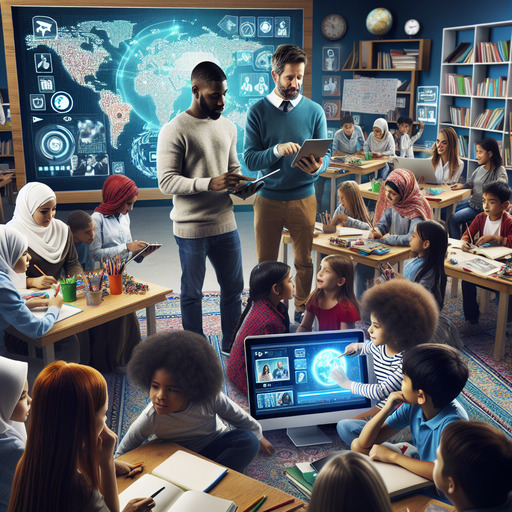
-
Table of Contents
Discover the transformative power of video in modern education and elevate your school’s learning experience. Download “The Role of Video in Modern Education: A Guide for Schools and Districts” now! Learn More
Introduction
In the rapidly evolving landscape of modern education, the integration of video technology has emerged as a transformative tool for enhancing learning experiences and outcomes. “The Role of Video in Modern Education: A Guide for Schools and Districts” delves into the multifaceted benefits and applications of video in educational settings. This guide explores how video can support diverse learning styles, foster engagement, and provide access to a wealth of resources beyond the traditional classroom. By examining case studies, best practices, and technological advancements, this comprehensive resource aims to equip educators and administrators with the knowledge and strategies needed to effectively incorporate video into their curricula, ultimately enriching the educational journey for students across all grade levels.
The Role of Video in Modern Education: A Guide for Schools and Districts
In the rapidly evolving landscape of modern education, the integration of video technology has emerged as a transformative tool for schools and districts. As educational institutions strive to meet the diverse needs of students, video has proven to be an invaluable resource, enhancing both teaching and learning experiences. This guide aims to elucidate the multifaceted role of video in contemporary education, offering insights into its benefits, applications, and best practices for implementation.
To begin with, video technology offers a dynamic and engaging way to present information, catering to various learning styles. Visual learners, in particular, benefit from video content, which can make complex concepts more accessible and easier to understand. For instance, a science teacher can use video demonstrations to illustrate chemical reactions, providing a visual context that textbooks alone cannot offer. Moreover, videos can be paused, replayed, and reviewed, allowing students to learn at their own pace and revisit challenging material as needed.
In addition to enhancing comprehension, video technology fosters greater student engagement. Traditional lectures can sometimes fail to capture students’ attention, especially in an age where digital media is ubiquitous. By incorporating videos into the curriculum, educators can create more interactive and stimulating lessons. For example, history teachers can use documentary clips to bring historical events to life, while language instructors can utilize videos of native speakers to improve students’ listening and comprehension skills. This multimedia approach not only makes learning more enjoyable but also helps to maintain students’ interest and motivation.
Furthermore, video technology supports differentiated instruction, enabling teachers to tailor their lessons to meet the individual needs of students. With the ability to create and share personalized video content, educators can address varying levels of proficiency within a single classroom. For instance, advanced students can be provided with supplementary videos that delve deeper into the subject matter, while struggling students can access remedial videos that reinforce foundational concepts. This flexibility ensures that all students receive the appropriate level of challenge and support, promoting a more inclusive and equitable learning environment.
Another significant advantage of video in education is its potential to facilitate remote and hybrid learning. The COVID-19 pandemic has underscored the importance of adaptable teaching methods, and video has played a crucial role in this transition. Through live-streamed classes and recorded lectures, educators can maintain continuity of instruction, regardless of physical location. This capability is particularly beneficial for students who may be unable to attend school due to illness, travel, or other circumstances. Additionally, video conferencing tools enable real-time interaction between teachers and students, fostering a sense of community and collaboration even in a virtual setting.
To maximize the benefits of video technology, schools and districts must adopt best practices for its implementation. This includes investing in high-quality equipment and software, providing professional development for educators, and establishing clear guidelines for video usage. It is also essential to ensure that video content is accessible to all students, including those with disabilities. Closed captioning, audio descriptions, and other accessibility features should be incorporated to accommodate diverse needs.
In conclusion, the role of video in modern education is multifaceted and far-reaching. By enhancing comprehension, fostering engagement, supporting differentiated instruction, and facilitating remote learning, video technology has the potential to revolutionize the educational experience. As schools and districts continue to navigate the challenges and opportunities of the digital age, the strategic integration of video will be instrumental in preparing students for success in an increasingly interconnected world.
Q&A
1. **How can video enhance student engagement in modern education?**
Video can enhance student engagement by providing dynamic and interactive content that caters to various learning styles, making complex subjects more accessible and interesting, and allowing for self-paced learning. It can also facilitate flipped classrooms, where students watch lectures at home and engage in hands-on activities in class, fostering a more interactive and participatory learning environment.